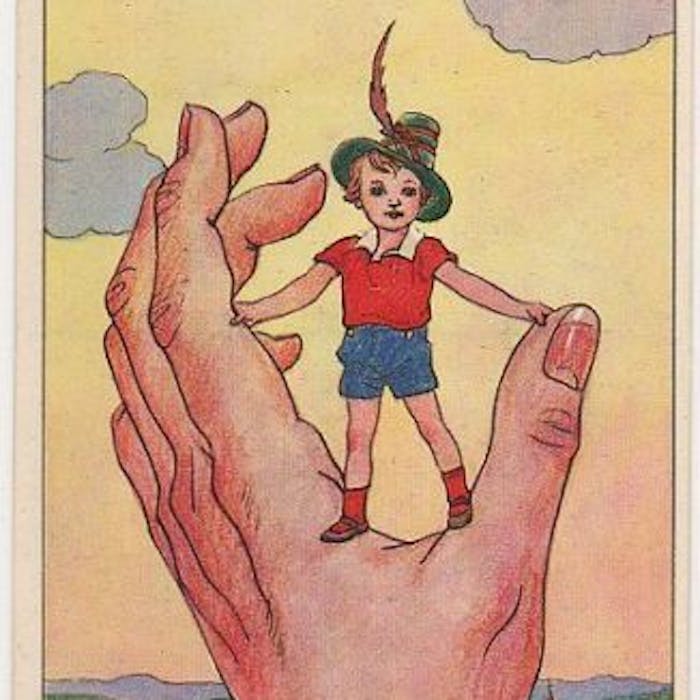
Tom Thumb: a mythic character in the first fairytale printed in English
Tom Thumb is a character in English folklore, and The History of Tom Thumb (published in 1621) was the first fairy tale printed in English. The tale has it that Tom is no bigger than his father’s thumb, and his adventures include being swallowed by a cow, and becoming a favourite of King Arthur.
The earliest surviving text concerning Tom Thumb is a 40-page booklet, printed in 1621. It is entitled The History of Tom Thumbe, the Little, for his small stature surnamed, King Arthur's Dwarfe: whose Life and adventures containe many strange and wonderfull accidents, published for the delight of merry Time-spenders, presumed to be authored by Londoner Richard Johnson. The only known copy is in the Pierpont Morgan Library in New York.
Although this text is the earliest printed version, Tom Thumb had been an established character in English folklore beforehand. For example, Reginald Scot’s Discoverie of Witchcraft (1584) featured Tom Thumb as a creature used by servant maids to frighten children.
Johnson’s tale was reprinted many times in Britain throughout the centuries, and was sold in America as early as 1686. Although originally intended for adults, a more sanitised version appeared in the nineteenth century, which was designed for nurseries with more moralising messages included.
It is possible that Tom Thumb was a real person, because there is a grave that purports to be his in Holy Trinity Church, Tattershall, Lincolshire, that measures just 40cm in length. According to this grave, he died at the age of 101 in 1620.
Further reading
- Tom Thumb's Grave - Writing in Margins blog
- Tom Thumb Magic Lantern Slides - Lanterna Magica
- The 'real' Tom Thumb - Coruba
Links to external websites are not maintained by Bite Sized Britain. They are provided to give users access to additional information. Bite Sized Britain is not responsible for the content of these external websites.
